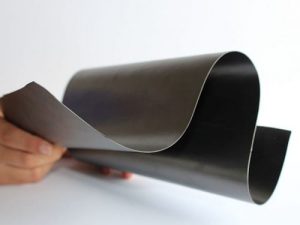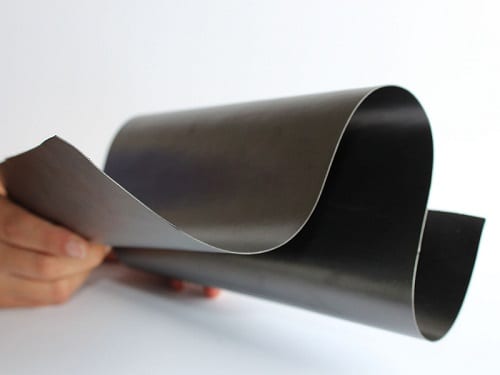Umsicht is one of the 66 institutes of the Fraunhofer-Gesellschaft, the largest organization for applied research in Europe. It is headquartered in Oberhausen, Germany. The focus of Fraunhofer Umsicht is the energy turnaround and the raw material shift. Customers are industrial enterprises, service companies and public authorities.

An unstructured flexible bipolar plate. Source: Fraunhofer Umsicht
Now, Umsicht has developed a highly conductive material that consists of graphite and carbon black as well as one thermoplastic element. Acording to the institute, the thermoplastic properties make the material highly flexible, less brittle and allow for a heat-sealing and subsequent reshaping.
A very good electrical conductivity thanks to a high amount of carbon particles permits a large range of applications. Use in the field of electrochemical reactors, such as electrodes for fuel cells or redox flow batteries, is possible as well as applications in heat exchangers or resistive heating elements.
“These novel characteristics make sealing obsolete and allow for a more compact and efficient way of manufacturing”, as Lukas Kopietz from the Electrochemical Processes department explains. The researcher points out that the materials are not only mechanically stable but also gastight and chemically resistant.

















